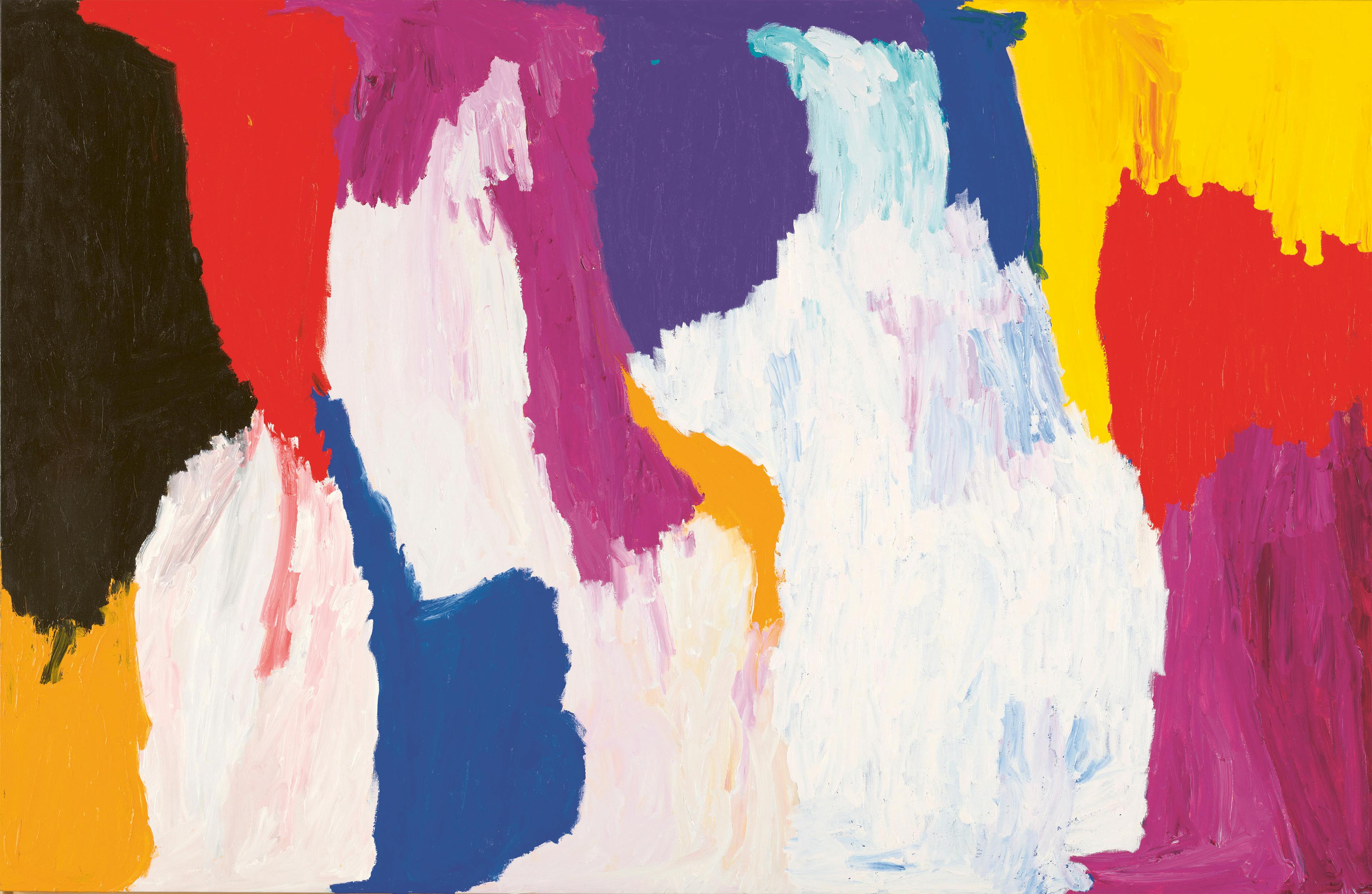THE SOUND OF THE WORLD
Always on the lookout, curious and open to the world, the Fondation Cartier pour l’art contemporain has relied on the living testimony of artists since its very creation. In 2022, three exhibitions gave us a glimpse of what is to come.
Unearthing a forgotten past: Sally Gabori
Art that brings out the essence. This is what lies behind the work of Sally Gabori, showcased for the first time outside Australia by the Fondation Cartier pour l’art contemporain. It is as if painting revived the artist, allowing her to heal. Mirdidingkingathi Juwarnda Sally Gabori’s period of artistic activity lasted only nine years, during which she explored multiple resources of artistic expression. Without stopping, and at a fast pace, as the artist only took to painting when she was over 80. Originally from Bentinck Island in the Gulf of Carpentaria, North Australia, Sally Gabori belonged to the Kaiadilt population. She spent the first years of her life preserving stone fishing traps and weaving natural fiber baskets, as per her people’s traditions.
In 1948, however, following a cyclone, her community was displaced by missionaries to the neighboring island of Mornington. In 2005, as she began painting, it was the places of her native island that she would go on to represent. An abundance of color, an interplay of shapes, overlapping surfaces and varying sizes: going back to basics gives rise to paintings of extraordinary pictorial modernity, in turn revealing an imagery with endless horizons. This is expressed through variations of light that result from the contrasting climate of the Gulf of Carpentaria. Following Sally Gabori’s death in 2015, her work captivated through its spontaneous, original and completely unique character, with no apparent attachment to other artistic movements, particularly on the contemporary Aboriginal painting scene.
Dibirdibi Country, 2010. Synthetic polymer paint on linen, 200 × 305 cm Estate Sally Gabori, Cairns and Alcaston Gallery, Melbourne, Australia
Looking beyond: Graciela Iturbide
This symbolic figure of Latin-American photography invites us to look further and to free photography from its documentary role. From February 12 to May 29, the Fondation Cartier showcased over 200 of her images, from her most iconic work to her more recent photography, as well as a color series made especially for the exhibition. Her meeting with Mexican photographer Manuel Álvarez Bravo, who had a passion for pre-Hispanic culture, was a turning point. Thanks to him, she discovered an open-mindedness, a different perspective and a sense of “taking time”. Between 1970 and 1990, Graciela Iturbide traveled the world. Mexico, East Germany, Spain, Ecuador, Japan, India... She captured many photographic portraits and images of popular festivals or traditional rituals.
The artist is influenced by her very first encounter with death – the passing of her six-year-old daughter, a tragedy which abruptly prompted her to focus her work on funeral rites, and to look elsewhere. Rather than a pursuit of technical mastery, these images convey a radical black and white aesthetic and show a genuine interest in Indigenous populations, and it is this dignity that is reflected in Iturbide’s photography. Her style, empathetic and fed by singular poetry, focuses on rites and symbolism over time, through photographs that provoke meditation and constitute a true lesson in simplicity. As opposed to the magical realism that she is often associated with, Graciela Iturbide prefers the idea of a “dose of poetry and imagination,” which pushes the documentary method of interpretation further and conveys travel as an opportunity to learn and be amazed. “Knowledge is twofold: as you travel, you discover things on the outside but also on the inside of yourself, through your own solitude.”
Graciela Iturbide, Carnaval, Tlaxcala, México, 1974, gelatin-silver process print, 18×18cm
Listening to a world in silence: « the great animal orchestra »
View of the projection by Bernie Krause and United Visual Artists, “The Great Animal Orchestra”, 2016, multimedia exhibit, 1’32’’, Collection Fondation Cartier pour l’art contemporain, at the Sydney Opera House, Elizabeth St, Sydney, 2022
After Milan and Salem (United States), “The Great Animal Orchestra” made a stop in Sydney for the 23rd Biennale held there from March 12 to June 13. A moment in time during which this work, created in Paris in 2016, was displayed for three nights on the sails of the city’s Opera House: an aesthetic audio and visual contemplation of an endangered animal world, imagined by bio-acoustician and musician Bernie Krause and design studio United Visual Artists. This immersive experience, simultaneously engaging our senses and our emotions, features recordings of the animal world collected by Bernie Krause since the early 1970s
In total: over 5,000 hours of content from wild, land and marine habitats, including over 15,000 animal species, a heritage archived by Bernie Krause for future generations, to ensure that “The Great Animal Orchestra” is never silenced.
